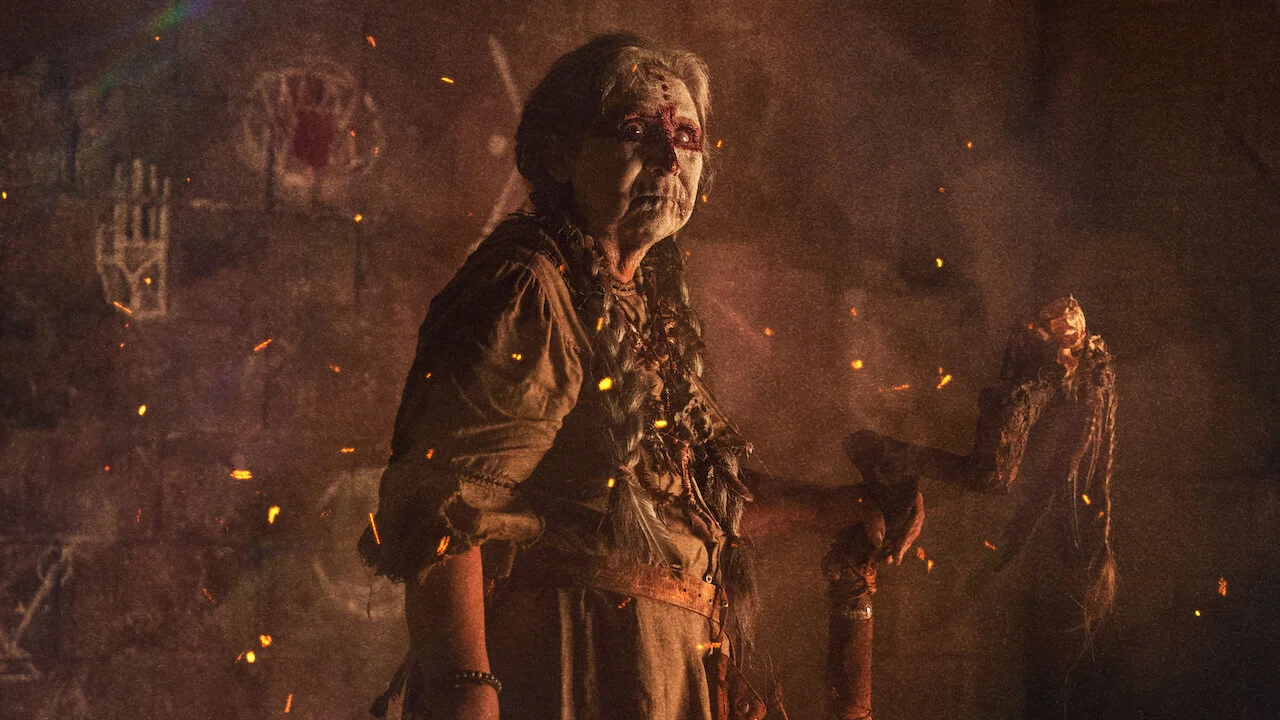Halloween Horror: The Fog (1980)
Add The Fog to the list of John Carpenter films that are way scarier than you’d think from hearing the concept. Like Christine, The Fog has a goofy, kids-around-the-campfire quality to its story of ghost sailors terrorizing a town through a supernatural fog—Carpenter even starts the film with a campfire framing device. But like Christine, the quality is all in the execution. Taking a page from Steven Spielberg, Carpenter patiently builds tension and lets us learn about the characters of the town before springing the monsters on us. The result is that The Fog is not just compelling as a mood piece, but also an illuminating portrait of a small town.
The setting is the Northern Californian town of Antonio Bay, which is ready to celebrate its 100th anniversary. We meet the residents, including the local radio DJ, Stevie Wayne (Adrienne Barbeau), who broadcasts from an old lighthouse, her son Andy (Ty Mitchell), a handyman resident Nick Castle (Tom Atkins), the priest, Father Malone (Hal Holbrook), and Kathy Williams (Janet Leigh), who is overlooking the town’s anniversary celebrations. On the night before the anniversary, a thick fog rolls in across the bay and interrupts Nick, who is driving home. He picks up a hitchhiker, Elizabeth Solley (Jamie Lee Curtis), and takes her home for the night, but not before the windows of his truck are mysteriously blown out while they’re on the highway.
When Nick and Elizabeth wake up the next morning, they realize more things have gone awry. Some local fisherman have gone missing and they head out to find them. Meanwhile Stevie prepares for a late-night DJ session to ring in the anniversary with her listeners, while Father Malone discovers a diary hidden in his church confessing to the true origin of the town: that it was founded by six men who lured a clipper through thick fog to shipwreck against the rocks so that its owner couldn’t found a leper colony on the bay. The six founders of the town, including the priest’s own grandfather, used gold found in the shipwreck to bankroll the town’s formation. Now, the sailors have returned to seek revenge on the descendents of those that killed them. Thus, the film is about exploring the origins of its heroes, who are descended from exploiters and villains.
As I said in the introduction, the story of sailors seeking revenge sounds like the sort of ghost story told around a campfire to scare children, but don’t think that just because the concept is silly that the film itself is. The Fog is genuinely creepy. Carpenter executes a similar formal approach as in his previous film, Halloween. He uses anamorphic widescreen to disguise the low budget and favours medium-wide shots and a frequently moving camera to add momentum to action sequences and tease danger lurking on the edge of the frame. He once again provides the score, which is another chilly, minimalistic use of synthesizer like the one for Halloween.
Like Steven Spielberg, Carpenter understands that a slow build up provides more tension for the climax, so he’s deliberate in following the characters going about their day and investigating the clues that point to the curse affecting their town. He also understands something that Alfred Hitchcock demonstrated throughout his work, which is that letting an audience know what’s coming makes something even scarier; the anticipation of a scare amplifies it. Thus, he teases the ghost sailors early on, showing them dispatching the fishermen out on the bay as the fog rolls in. But he doesn’t let you have a good look at them, so as to maintain their mysterious power.
Although low budget, the special effects in The Fog are excellent. The fog itself allows Carpenter to often frame the sailors as silhouettes or ghostly images deep in the frame. Like Michael Myers, the sailors are often still. When they move, they move slowly. That deliberate, steady movement is more chilling than herky-jerky chaos. They’re always shrouded in the fog, which never gives us a good look at them, and they don’t make many sounds, which keeps them mysterious and inhuman.
A film about a ghost fog better have a good atmosphere and The Fog has it in spades. The score and cinematography amplify the chilling tension and set-pieces. The action eventually leads the characters to the local church, where they make a last stand and hope to figure out a way to dispel the ghosts. Carpenter loves Rio Bravo-style standoff climaxes in his films. Assault on Precinct 13 is one long standoff, while later films like Prince of Darkness and Vampires centre much of their action on single locations. Those later two films also feature a church as the location of the standoff, showing how Carpenter likes to entwine religion into his own invented mythologies. Priests and the Church have power in his films and lend legitimacy to the supernatural elements that he conjures from his own imagination.
The Fog may not have the same iconic status as Halloween or the raw impact of something like Assault on Precinct 13 or The Thing, but it’s among Carpenter’s best works. Like Christine, it shows his capacity to take a goofy-sounding concept and mine it for all its worth.
8 out of 10
The Fog (1980, USA)
Directed by John Carpenter; written by John Carpenter and Debra Hill; starring Adrienne Barbeau, Tom Atkins, Jamie Lee Curtis, Hal Holbrook, Janet Leigh.



Kiyoshi Kurosawa’s horror drama is a quiet film with a haunting effect that’s as disturbing as anything you’ll find in horror cinema.